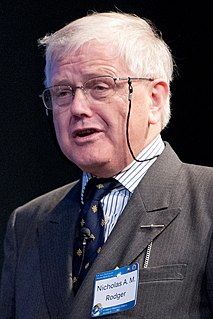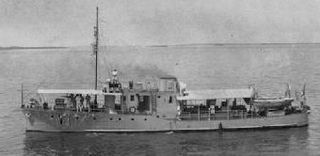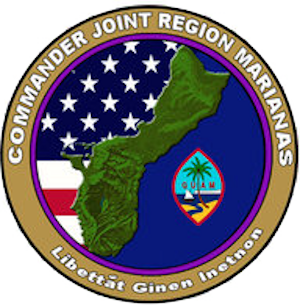
The secretary of the Navy is a statutory officer and the head of the Department of the Navy, a military department within the United States Department of Defense.

The Washington Navy Yard (WNY) is the former shipyard and ordnance plant of the United States Navy in Southeast Washington, D.C. It is the oldest shore establishment of the U.S. Navy.

The Naval War College is the staff college and "Home of Thought" for the United States Navy at Naval Station Newport in Newport, Rhode Island. The NWC educates and develops leaders, supports defining the future Navy and associated roles and missions, supports combat readiness, and strengthens global maritime partnerships.

The Naval History and Heritage Command, formerly the Naval Historical Center, is an Echelon II command responsible for the preservation, analysis, and dissemination of U.S. naval history and heritage located at the historic Washington Navy Yard. The NHHC is composed of 42 facilities in 13 geographic locations including the Navy Department Library, 10 museums and 1 heritage center, USS Constitution repair facility and detachment, and historic ship ex-USS Nautilus.

The Office of Naval Research (ONR) is an organization within the United States Department of the Navy responsible for the science and technology programs of the U.S. Navy and Marine Corps. Established by Congress in 1946, its mission is to plan, foster, and encourage scientific research to maintain future naval power and preserve national security. It carries this out through funding and collaboration with schools, universities, government laboratories, nonprofit organizations, and for-profit organizations, and overseeing the Naval Research Laboratory, the corporate research laboratory for the Navy and Marine Corps. NRL conducts a broad program of scientific research, technology and advanced development.

Nicholas Andrew Martin Rodger FSA FRHistS FBA is a historian of the Royal Navy and senior research fellow of All Souls College, Oxford.
The Royal Australian Naval Nursing Service (RANNS) was a former female branch of the Royal Australian Navy. The RANNS was formed in October 1942, wartime demands lead to a need to recruit women directly into the RAN. At its wartime peak the RANNS was made up of 56 nursing sisters with at least 12 months prior experience. The RANNS was disbanded 1948 but the demand for nurses was so great that the organisation was reformed in November 1948. In June 1984 the RANNS and the other female branch of the RAN, the Women's Royal Australian Naval Service, were incorporated into the permanent force and all female nurses became members of the nursing branch of the RAN.
Rear Admiral James Vincent Purcell Goldrick, is a naval historian, analyst of contemporary naval and maritime affairs, and a retired senior officer of the Royal Australian Navy. He currently holds the position of fellow at the Sea Power Centre – Australia. He is also an adjunct professor in the School of Humanities and Social Sciences in the University of New South Wales at the Australian Defence Force Academy and a member of the Naval Studies Group at the Australian Centre for the Study of Armed Conflict and Society, an adjunct professor in the Strategic and Defence Studies Centre of the Australian National University and a professorial fellow of the Australian National Centre for Ocean Resources and Security at the University of Wollongong. He was a visiting fellow at All Souls College, University of Oxford in the first half of 2015 and a non-resident Fellow of the Lowy Institute from 2013 to 2018.
Universal Ship Cancellation Society (USCS) is an international philatelic non-profit organization with an interest in postmarks and covers from all maritime services. Founded in 1932, the USCS is one of the oldest specialized postal history societies in the world and the only organization in the United States devoted to navy and maritime covers.

HMS Calliope was a Calypso-class corvette of the Royal Navy of the United Kingdom which served from 1887 until 1951. Exemplifying the transitional nature of the late Victorian navy, Calliope was a sailing corvette—the last such ship built for the Royal Navy—but supplemented the full sail rig with a powerful engine. Steel was used for the hull, and like the earlier iron-hulled corvettes, Calliope was cased with timber and coppered below the waterline, in the same manner as wooden ships.

HMAS Vigilant was an auxiliary patrol boat serving with the Royal Australian Navy during the Second World War. Notably it was the 120th ship built by the Cockatoo Island Dockyard and the first aluminium ship built in Australia.
Capt. Willard Franklyn "Bill" Searle Jr. USN (ret.) was an American ocean engineer who was principally responsible for developing equipment and many of the current techniques utilized in United States Navy diving and salvage operations.

HMAS Doomba was a Royal Australian Navy (RAN) warship of World War II. Built for the Royal Navy around the end of World War I as the Hunt-class minesweeper HMS Wexford, the ship only saw two years of service before she was decommissioned in 1921 and sold to the Doomba Shipping Company. The vessel was renamed SS Doomba, converted into a passenger ship, and operated in the waters around Brisbane until 1939, when she was requisitioned by the RAN for wartime service. Serving first as an auxiliary minehunter, then an auxiliary anti-submarine vessel, HMAS Doomba was purchased outright by the RAN in 1940, and served until early 1946, when she was sold and converted into a linseed oil lighter. Doomba was scuttled off Dee Why, New South Wales in 1976.

Adele was a steel screw steamer that was built in 1906 as a yacht. She was twice commissioned into the Royal Australian Navy (RAN), firstly as HMAS Franklin and later as HMAS Adele. She was wrecked at Port Kembla, New South Wales on 7 May 1943.
Fighter catapult ships also known as Catapult Armed Ships were an attempt by the Royal Navy to provide air cover at sea. Five ships were acquired and commissioned as Naval vessels early in the Second World War and these were used to accompany convoys. The concept was extended to merchant ships which were also equipped with rocket assisted launch systems and known as Catapult Aircraft Merchantmen.

The Underwater Archaeology Branch (UAB) of the Naval History & Heritage Command (NHHC) is a unit of the United States Department of the Navy. It was formally founded in 1996 as a consequence of the emerging need to manage, study, conserve, and curate the U.S. Navy's submerged cultural resources.

Joint Region Marianas (JRM) is a U.S. Navy-commanded joint military command. JRM is the installation management authority for all United States Department of Defense installations on Guam and the Northern Mariana Islands. This includes Andersen Air Force Base (AFB), Naval Base (NB) Guam, and Marine Corps Base (MCB) Camp Blaz. Its headquarters is located in Nimitz Hill Annex, Asan, Guam. The command is an amalgamation of the United States Navy's NB Guam and United States Air Force's Andersen AFB, which were merged on October 1, 2009.

The Admiralty and Marine Affairs Office (1546-1707) originally known as the Admiralty Office (1414-1546) was a government office of the Kingdom of England and the English Navy's central command. It was first established in 1414 when the remaining regional admiralties, the Northern and Western were abolished and their functions were unified under a single centralized command. It was administered by the Office of the High Admiral of England, Ireland and Aquitaine later called the Lord Admiral of England. During the sixteenth century it oversaw the creation of standing "Navy Royal", with its own secretariat, dockyards and a permanent core of purpose-built warships, originated in the early 16th century during the reign of Henry VIII. Under Elizabeth I England became involved in a war with Spain, which saw privately owned ships combining with the Royal Navy in highly profitable raids against Spanish commerce and colonies. In 1588, Philip II of Spain sent the Spanish Armada against England to end English support for Dutch rebels, to stop English corsair activity and to depose the Protestant Elizabeth I and restore Catholicism to England. The Spaniards sailed from Lisbon, planning to escort an invasion force from the Spanish Netherlands but the scheme failed due to poor planning, English harrying, blocking action by the Dutch, and severe storms. A Counter Armada, known as the English Armada, was dispatched to the Iberian coast in 1589, but failed to drive home the advantage England had won upon the dispersal of the Spanish Armada in the previous year. The Admiralty of England existed until 1707 when Kingdom of England and the Kingdom of Scotland united to form the single Kingdom of Great Britain when it then became known as the Admiralty Department or Admiralty of Great Britain.
Roger Charles Anderson was an independently-wealthy English maritime historian, collector, and a leading figure in the early years of the Society for Nautical Research and of the Navy Records Society. Four times editor of the Mariner's Mirror, Anderson was also a founder trustee, and later chairman of the board of trustees, of the National Maritime Museum, Greenwich. He was a Fellow of the Royal Historical Society, a Fellow of the Society of Antiquaries of London, and held the higher Doctor of Letters degree. In 2005, the Swedish naval historian Jan Glete characterised Anderson as "one of the most important naval historians of the twentieth century. He mainly wrote about early modern warship technology and used his linguistic skills to write books and essays based on the literature from several countries."

HMAS Sydney I - SMS Emden Memorial is a heritage-listed former foreign naval ship gun and now war memorial and war trophy located in Hyde Park, on the corner of Liverpool and College Streets in the Sydney central business district, in the City of Sydney local government area of New South Wales, Australia. It was designed by City of Sydney and built from 1917 by Messrs Loveridge and Hudson, Redfern. It is also known as HMAS Sydney 1 - SMS Emden Memorial and Emden Gun. The property is owned by City of Sydney. It was added to the New South Wales State Heritage Register on 27 February 2015.













